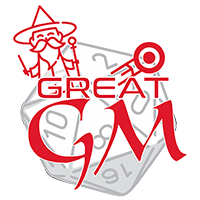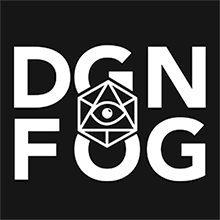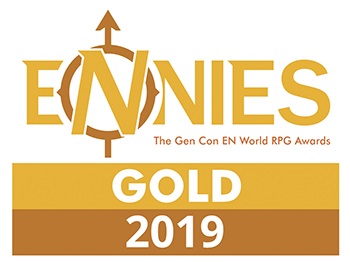Dungeons & Dragons 5e Race/Species : Mycelian
Remove these ads. Join the Worldbuilders Guild
Heliana's Guide to Monster Hunting
Mycelian
Quotes from Heliana's Guide to Monster Hunting
"Reusing and recycling are key tenets in the life of any mycelian (my-SEE-lee-an). Nothing is waste; rotten food can fatten a pig, a ruined shirt is a bandage waiting to happen, and corpses are new homes in need of a little bit of reinvigoration. Marginalised and persecuted by most societies, mycelians’ propensity to recycle the recently deceased often brings them into conflict with other humanoids. That being said, graverobbers and less scrupulous grey market traders have been known to make a pretty penny out of selling ageing mycelians their next vessels.
Reuse and Recycle
Mycelians reanimate the bodies of the recently deceased. Understandably, many more ‘civilised’ races disagree with this practice—it’s difficult to meet your uncle again a few hours after interring him. Moreover, mycelians don’t have the same regenerative abilities as the body’s original inhabitant; wounds are patched over with a web of hyphae, the skin takes on a pale pallor, and the body wears out fairly quickly, lasting six to seven years. Much like hermit crabs wear shells, mycelians inoculate corpses with microscopic spores, before growing a web of hyphae through the body. Nerves are co-opted, muscles are repaired, and fungal organs replace the internal viscera of the host. The process is entirely biological, but less tolerant denizens of the world often believe these reanimated bodies to be the work of necromancers, treating mycelians as infectious, living dead. The key to distinguishing a mycelian from a zombie, of course, is the smell. Mycelians carry a hearty, musky aroma like that of a vivacious forest floor. Undead, on the other hand, carry the putrid- sweet scent of decay. After several unfortunate interactions with necromancer-hunters, the Sisters of Mercy began employing dogs, with their keen sense of smell, to help differentiate between innocent mycelians and undead artifice.
Ancestors and Aging
With each new host, a mycelian’s psyche changes a little, moulded by the brain, body, and abilities of the host it co-opts. In moving from one host to another, a mycelian also leaves behind some of its own memories, forever lost to the decay of time. Despite being potentially thousands of years old, the longest-living communities of mycelians often have memories stretching back only a few decades. For this reason, mycelians conduct a ritual shortly before death, where they recant a rhythmic history of their exploits in this host, adding it to the oral history of their community. These oral histories can be days long, and minor word changes (or ‘linguistic decay’ as scholars refer to it) have resulted in tales becoming more and more outlandish the further back in time they occurred.
Legend of the Mothershroom
Every mycelian oral history has one thing in common: its beginning. These stories all start with the ‘Mothershroom’, a behemoth fungal organism and progenitor to all mycelians. In some stories, the Mothershroom takes the form of a giant, multi- coloured tree. In others, it is a miles-wide web of interconnecting, pulsing hyphae that thrum with thought and feeling. Despite their best efforts, no mycelian, explorer, or scholar has ever found the Mothershroom. Any knowledge of its location—if it even exists—has been lost to the grinding wheel of time. Many mycelians have embarked on quests to find their ancient ancestor. For some such adventurers, the desire to find this holy figure is the only memory they retain between bodies."
Creature Type. You are a humanoid. You are also considered a plant for any prerequisite or effect that requires you to be a plant.
Size. Mycelians run the full gamut of humanoid races, from 2-foot-tall gnomes to 8-foot-tall golynns. Your height, weight, and size are determined by the race to which your host corpse belonged in life. It is typically Small or Medium.
Symbiotic Assimilation. Your unique lifecycle allows you to co-opt some of the adaptations of your host corpse. Choose two of the following adaptations; the race to which your host corpse belonged must have had this racial trait in order for you to choose it (GM’s discretion).
- Damage Resistance (Multiple). You have resistance to one damage type determined by your host body’s race.
- Darkvision (Multiple). The darkened chambers of The Low are your home. You have superior vision in dark and dim conditions. You can see in dim light within 60 feet of you as if it were bright light, and in darkness as if it were dim light. You can’t discern colour in darkness, only shades of grey.
- Dwarven Resilience (Dwarf). You have advantage on saving throws against poison, and you have resistance against poison damage.
- Halfling Nimbleness (Halfling). You can move through the space of any creature that is of a size larger than yours.
- Muscle Memory (Any). You gain proficiency in one skill of your choice. You can take this option multiple times.
- Natural Weapon (Multiple). You have a physical characteristic, such as horns, claws, or teeth, that acts as a natural melee weapon which you can use to make unarmed strikes. If you hit with it, you deal bludgeoning, piercing, or slashing damage (depending on the body part) equal to your Strength modifier plus a damage die determined by your host body’s race, instead of the bludgeoning damage normal for an unarmed strike.
- Powerful Build (Multiple). You count as one size larger when determining your carrying capacity and the weight you can push, drag, or lift.
- Relentless Endurance (Half-Orc). When you are reduced to 0 hit points but not killed outright, you can drop to 1 hit point instead. You can’t use this trait again until you finish a long rest.
Racial Traits Not in This List A GM has great latitude in deciding whether traits not in this list are available from other host races. If a trait is especially powerful, such as a flflying speed, the GM could consider permitting a character to select only that feature and no others (i.e. the character gains one option from this list instead of two).
Spore Spray. As a reaction when a creature within 10 feet of you hits you with a melee attack, you can attempt to poison it with a burst of spores. The target must succeed on a Constitution saving throw (DC = 8 + your Constitution modifier + your proficiency bonus) or take 1d8 poison damage and become poisoned until the end of its next turn. You can use it a number of times equal to your proficiency bonus, and you regain all expended uses when you finish a long rest. This damage increases to 2d8 at 5th level.
Insporeation. When you die within 100 feet of a humanoid corpse that has been dead no longer than 24 hours, and that hasn’t been subjected to magic that accelerates decay or prevents decay (such as the gentle repose spell), you can use your dying breath to eject spores to inhabit that corpse. Roll percentile dice. If you roll a number equal to or higher than the distance between your body and the corpse in feet, your spores take hold. For example, a target 30 feet away requires a roll of 30 or higher to succeed.
On a success, the new body rises again in 2d6 days. You gain the benefits of a long rest and lose your previous Symbiotic Assimilation adaptations, gaining new ones according to the race of the target corpse. On a failure, you die as normal.





